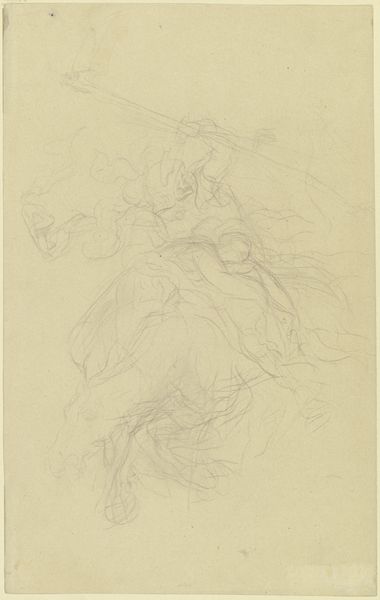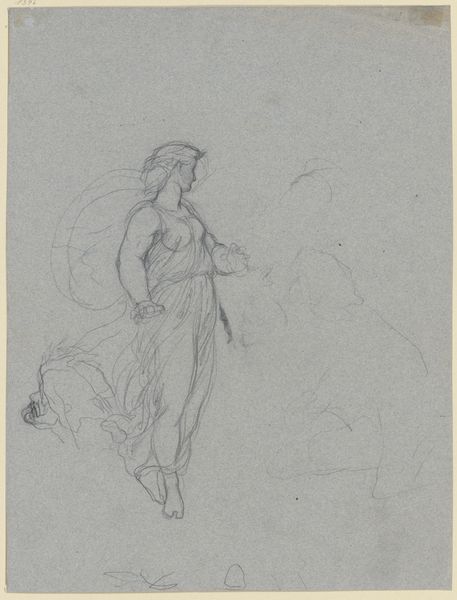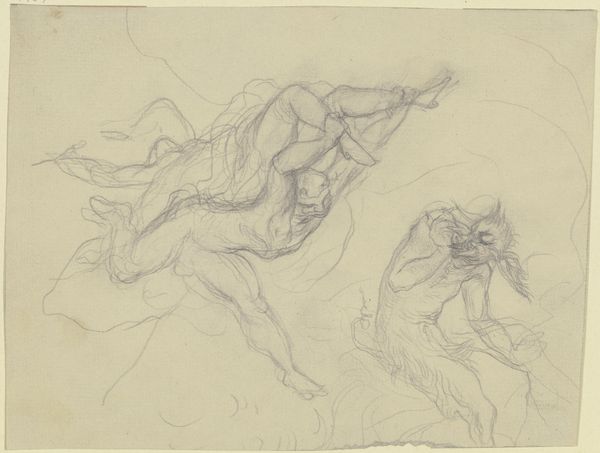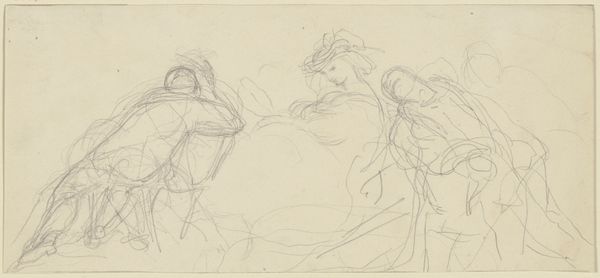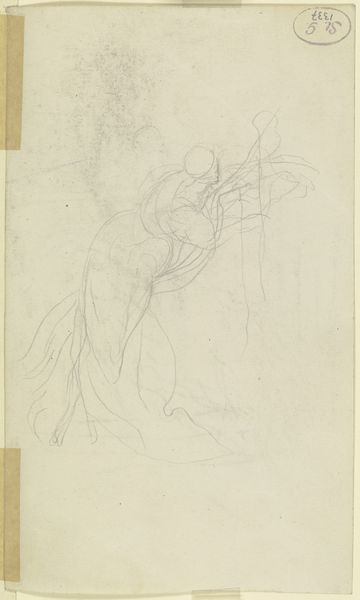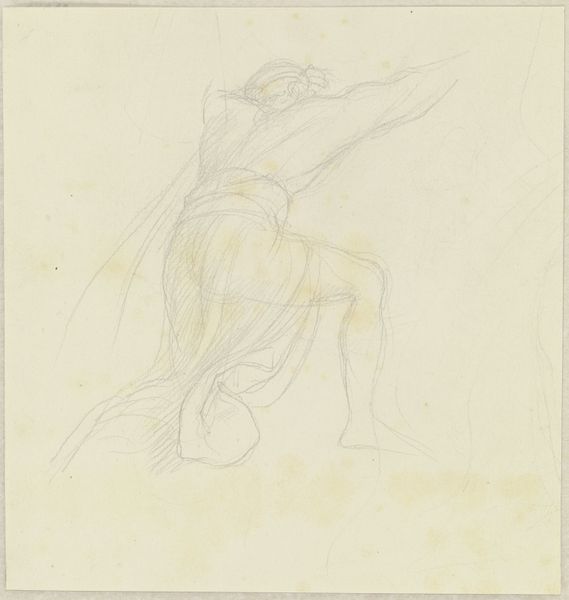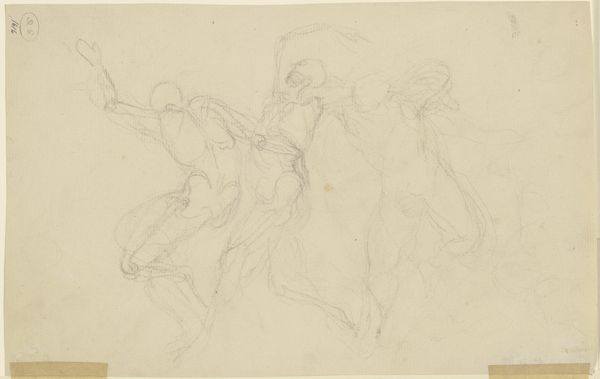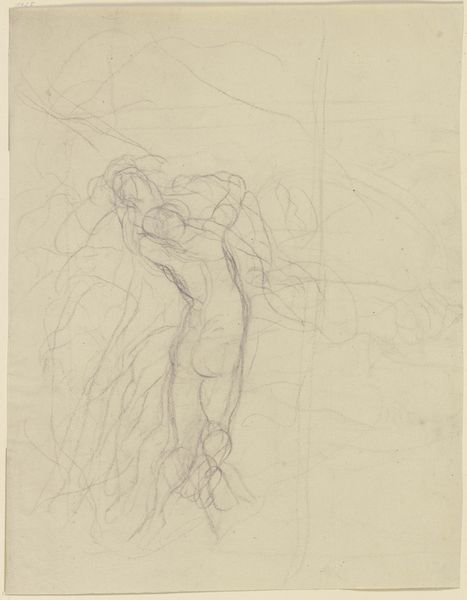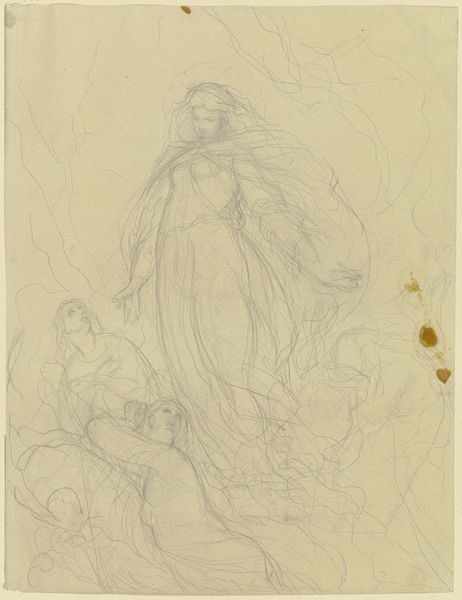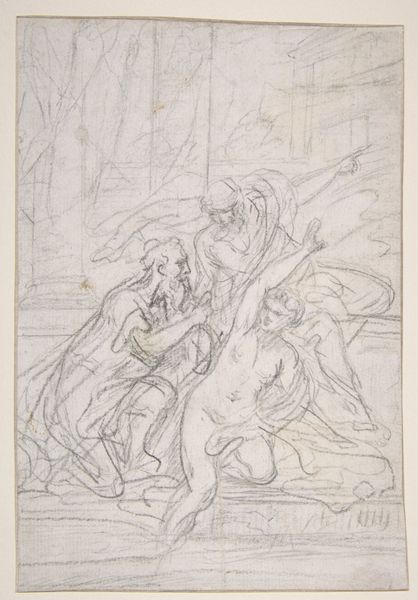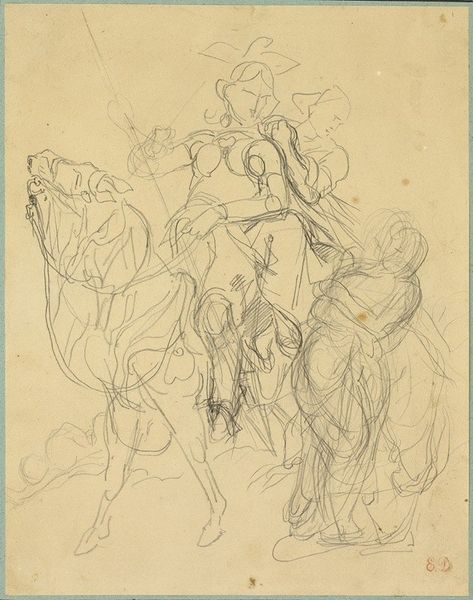
drawing, paper, pencil
#
drawing
#
landscape
#
figuration
#
paper
#
pencil
#
history-painting
#
academic-art
Copyright: Public Domain
Editor: This drawing by Victor Müller is titled 'Tomyris mit dem Haupte des Kyros zu Pferde', it’s a pencil on paper and its precise date is unknown. It depicts a woman on horseback, holding what appears to be a severed head. It feels powerful, but also a bit…unsettling. What stands out to you? Curator: It is unsettling, and purposefully so, I think. We see Tomyris, a queen of the nomadic Massagetae people, depicted not just as a victor but as a figure of retribution against Cyrus the Great. It asks us to consider the narratives we tell about power and conquest. Editor: Retribution how so? Curator: Cyrus, a symbol of empire and expansion, met his match in Tomyris. According to accounts, after defeating and killing her son, Tomyris fulfilled her vow of revenge by defeating Cyrus and then decapitating him, subsequently plunging his head into a vessel filled with blood. It's a potent image of female leadership and resistance against imperial overreach, isn't it? How does Müller visually convey this clash of power? Editor: I guess the woman, Tomyris, is much larger than life, it almost looms out of the drawing, where all the other characters like Cyrus are very small in scale. What are we to make of her academic-art style rendering? Curator: Precisely! Müller utilizes the academic style, typically reserved for glorifying historical or mythological figures, but subverts it to celebrate a woman who defied empire. It is through her identity as a woman in particular that Müller encourages questioning the grand narratives of history paintings produced at this time, particularly around the rise of empires in the 19th century. We must then think about who gets written *out* of official histories of this kind. The piece demands we consider whose stories are valorized and whose are erased. Editor: So, by presenting Tomyris in this heroic mode, Müller subtly challenges the traditionally masculine narratives of power and victory. I never would have read this in it. Curator: Exactly. The drawing then becomes an act of historical reclamation. Art becomes a tool for questioning power and offering alternative perspectives. Editor: This has completely changed how I view the drawing. Thank you! Curator: It’s been a pleasure! I’m happy to see that it prompted a critical awareness of the drawing’s artistic, cultural and historical roots.
Comments
No comments
Be the first to comment and join the conversation on the ultimate creative platform.
